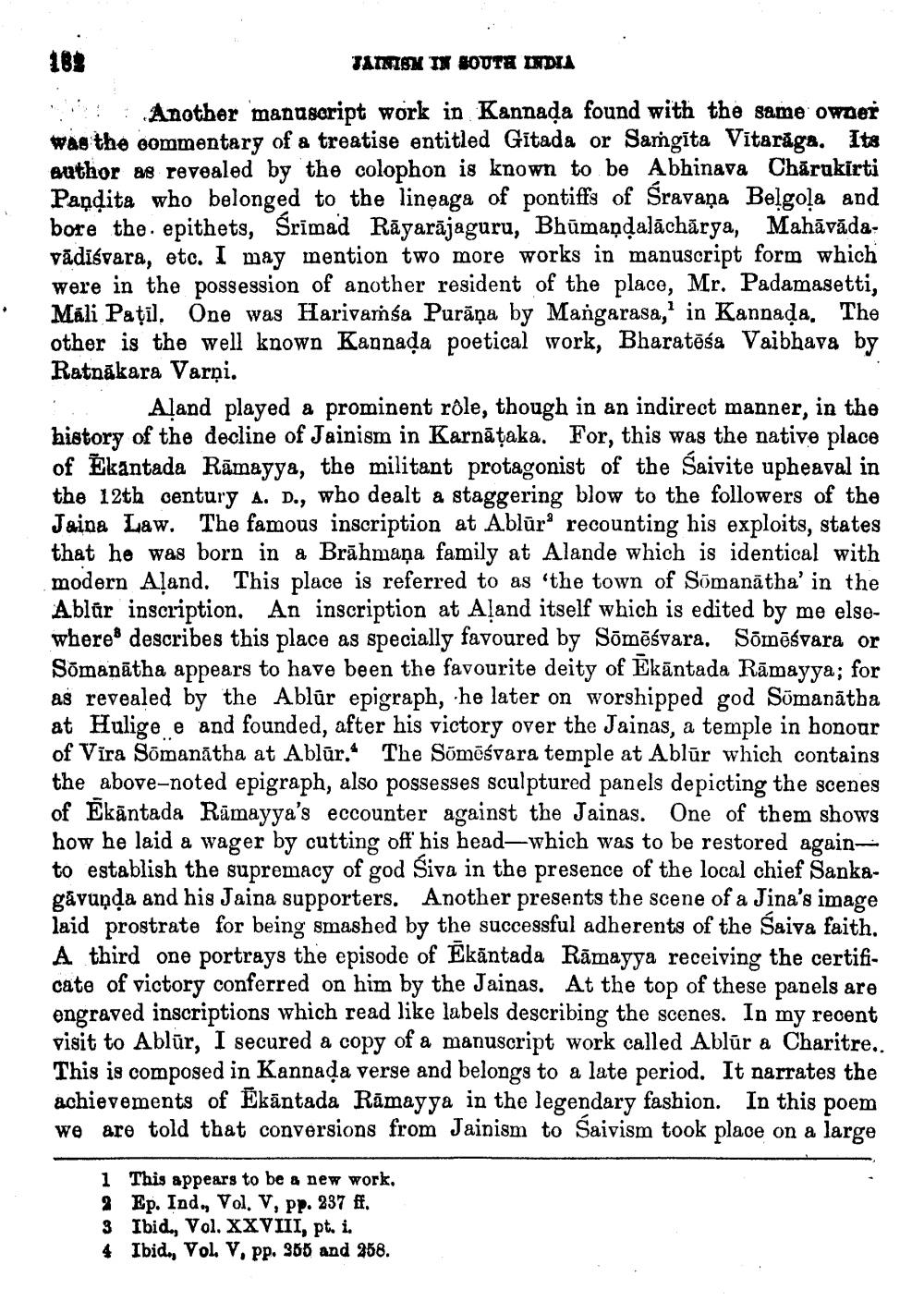________________
TAINISM IN HOUTH INDIA
:: Another manuscript work in Kannada found with the same owaer was the commentary of a treatise entitled Gitada or Samgīta Vitarăga. Its author as revealed by the colophon is known to be Abhinava Chărukirti Pandita who belonged to the lineaga of pontiffs of Śravaņa Belgola and bore the. epithets, Srimad Rāyarājaguru, Bhūmaņdalācharya, Mahāvāda. vādīśvara, etc. I may mention two more works in manuscript form which were in the possession of another resident of the place, Mr. Padamasetti, Máli Pațil. One was Harivaṁsa Purāņa by Mangarasa,' in Kannada, The other is the well known Kannada poetical work, Bharatēśa Vaibhava by Ratnākara Varņi. 1. Aland played a prominent role, though in an indirect manner, in the history of the decline of Jainism in Karnāțaka. For, this was the native place of Ekantada Rāmayya, the militant protagonist of the Saivite upheaval in the 12th century A. D., who dealt a staggering blow to the followers of the
waw. The famous inscription at Ablūr: recounting his exploits, states that he was born in a Brāhmaṇa family at Alande which is identical with modern Aland. This place is referred to as 'the town of Sõmanātha' in the Ablär inscription. An inscription at Aļand itself which is edited by me elsewhere® describes this place as specially favoured by Sõmēśvara. Sõmēśvara or Sõmanātha appears to have been the favourite deity of Ekāntada Rāmayya; for as revealed by the Ablür epigraph, he later on worshipped god Sõmanātba at Hulige e and founded, after his victory over the Jainas, a temple in honour of Vira Sõmanātha at Ablūr.* The Sõmāśvara temple at Ablūr which contains the above-noted epigraph, also possesses sculptured panels depicting the scenes of Ekāntada Rāmayya's eccounter against the Jainas. One of them shows how he laid a wager by cutting off his head—which was to be restored again to establish the supremacy of god Siva in the presence of the local chief Sankagāvuņda and his Jaina supporters. Another presents the scene of a Jina's image laid prostrate for being smashed by the successful adherents of the Saiva faith. A third one portrays the episode of Ekāntada Rāmayya receiving the certificate of victory conferred on him by the Jainas. At the top of these panels are engraved inscriptions which read like labels describing the scenes. In my recent visit to Ablür, I secured a copy of a manuscript work called Ablūr a Charitre. This is composed in Kannada verse and belongs to a late period. It narrates the achievements of Ekāntada Rāmayya in the legendary fashion. In this poem we are told that conversions from Jainism to Saivism took place on a large
1 2 3 4
This appears to be a new work. Ep. Ind., Vol. V, pp. 237 ff. Ibid., Vol. XXVIII, pt. i. Ibid., Vol. V, pp. 365 and 258.




